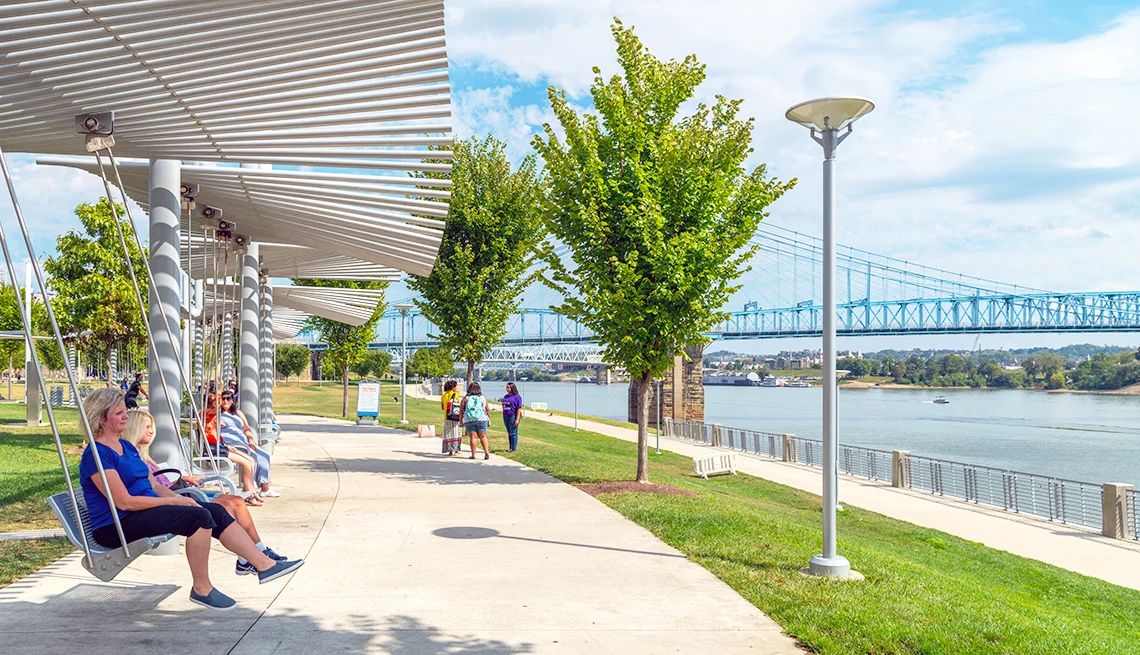AARP Hearing Center


When a couple of financial adviser Ryan Carney’s clients grew tired of retirement living in Florida last year, they picked up stakes and returned to their old hometown, the Sunshine State’s polar opposite: Buffalo, New York.
Low living costs, well-established health care facilities, a downtown makeover and proximity to Niagara Falls have helped make the Rust Belt city on Lake Erie more attractive to retirees like them, despite its lake-effect snowstorms and subzero temperatures.
Buffalo tops online property marketplace Zillow’s 2024 list of the nation’s hottest housing markets. Retirees from New England, even Canada, have recently moved to the city, says Carney, a certified financial planner with Winthrop Partners in Buffalo and a cheerleader for its retirement-friendly amenities.
“We’ve definitely seen an uptick, especially among people with roots here,” he says. “There wasn’t much for retirees to choose from before we created all these spaces in nicer areas.”
Buffalo’s spruce-up, designed to entice would-be newcomers, mirrors efforts in other Northeast and Midwest cities many Americans have long associated with post-industrial decline. As they look to reverse decades of hemorrhaging population, Rust Belt regions are plowing public dollars into revitalization, some creating neighborhoods purpose-built to lure relocating retirees and keep longtime residents in areas where they have a history, family and friends.
(Re)building on strengths
Starting in the 2010s, a major economic development push in the Buffalo region poured state and local resources into revitalizing the city’s waterfront. Restaurants and coffee shops sprang up, as did neighborhoods designed to be affordable, livable and easily navigated.
Cities such as Cincinnati, Cleveland, Columbus and Kansas City (which is just outside the Rust Belt but also experienced considerable population decline in the latter part of the 20th century) have also sought to build from their strengths, leveraging large amounts of private investment to complement remnants from their glory years — museums, ballparks, well-regarded medical facilities — with new, bustling downtown cores and restaurant-and-brewery districts.
Besides becoming more livable, those regions may be benefiting from a ready supply of established, affordable housing that contrasts with the tight, high-priced markets in many traditional retirement hotbeds.
Cincinnati, Columbus, Indianapolis and Cleveland joined Buffalo on Zillow’s list of the top 10 hot housing markets, based on such factors as job growth, projected gains in home values and how fast listed houses are selling. Cleveland and Kansas City were ninth and 10th on moving services marketplace Hire A Helper’s list of the most popular urban destinations for retiree relocations in 2023 (although the top-ranked Miami-Fort Lauderdale area still drew many more moves).






































































More From AARP
Is a Retirement Move to Michigan for You?
Mild summers, lakeshore galore beckon older adults5 Reasons to Consider a Retirement Relocation
Change of scene could stretch savings, reboot lifestyle
Recommended for You